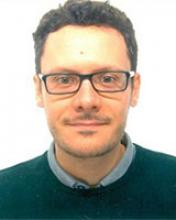Multiscale screening of two-dimensional materials for electro-catalysis
Date & Time:
Fri, 02/05/2021 - 2:00pmSpeaker:
Oliviero AndreussiJob title:
Assistant ProfessorAffiliation:
Department of Physics, University of North TexasLocation:
Register to be invitedAbstract:
Recent advances in the field of continuum models of solvation have opened the possibility of characterizing heterogeneous catalysis and electrochemistry in a first-principles-based framework, where the multiscale nature of the developed approaches provides a significant reduction of the computational burden while retaining a good accuracy. Here, the core methodological aspects and the most recent features of these recently developed approaches, as implemented in the ENVIRON library (www.quantum-environ.org), will be reviewed. Applications to the study of materials for electrocatalytic reactions will be presented, including recent systematic screenings of two-dimensional materials as electrocatalysts for the hydrogen evolution reaction (HER) and for the oxygen evolution reaction (OER).

Biography:
Dr. Andreussi earned his undergraduate degree in Chemical Physics in 2003 from the University of Pisa and the Scuola Normale Superiore of Pisa. He earned a Ph.D. degree (2008) in Physical Chemistry from Scuola Normale Superiore of Pisa. His Ph.D. research topic was on modeling the structure and dynamics of water at interfaces. He had several years of postdoctoral work, at MIT, Oxford, EPFL, and the University of Pisa. In 2018, Dr. Andreussi began his appointment as an assistant professor at the Department of Physics of the University of North Texas, where he is currently doing research in computational physics of materials. Dr. Andreussi research is currently funded by NSF, ACS PRF, the Welch Foundation, and he received the NSF CAREER award in spring 2020. More information about Dr. Andreussi and his research can be found at www.materialab.org and at www.quantum-environ.org.
Seminar ID:
202102051400Department:
Materials Science and Engineering